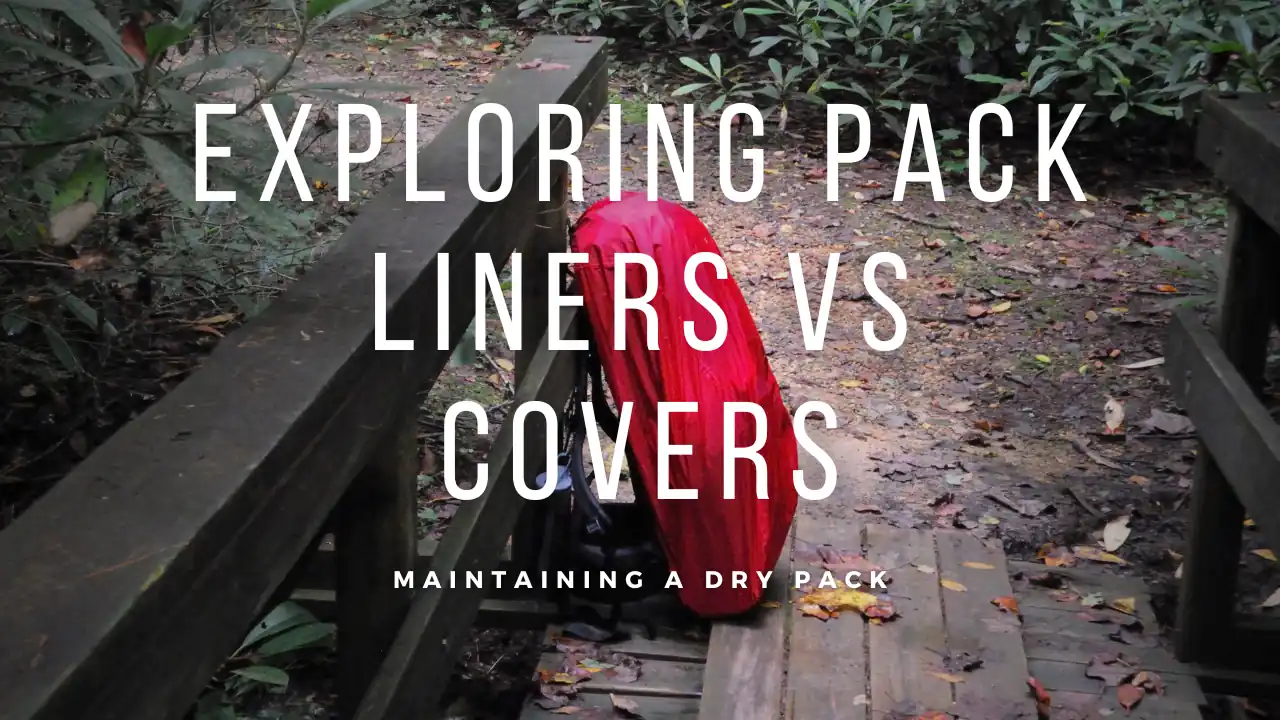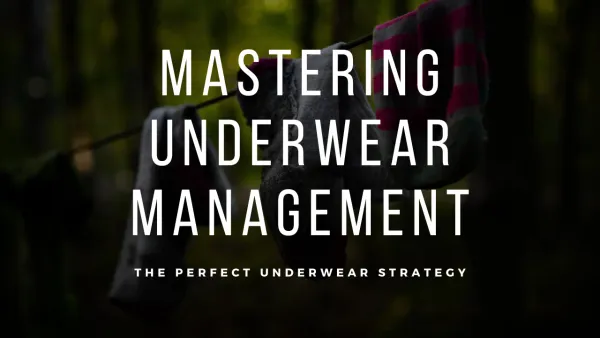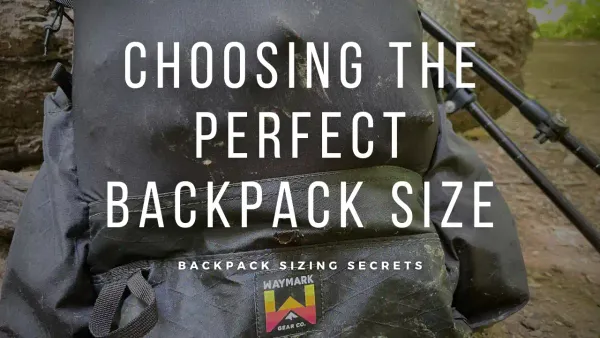Dry Gear, Happy Hiker: Choosing Between Pack Liners and Covers
Backpackers face a crucial choice: pack liners or covers? Discover which option keeps your gear dry and your adventure on track.

When you're planning your backpacking adventure, you'll need to think about how to keep your critical gear dry. Pack liners and pack covers are the two most popular options, but which one is right for you?
Both have their merits, and the choice isn't always clear-cut. You'll want to evaluate factors like effectiveness, weight, and versatility. As you explore these options and this decision, keep in mind that your choice could mean the difference between a comfortable trek and a miserable slog through wet conditions.
Pack Liners: Your Internal Moisture Barrier
Personally I view pack liners as essential if you're looking to keep your gear dry while on backpacking trips. These incredibly lightweight plastic bags are a secret weapon against moisture, creating an impenetrable barrier between your vital dry contents and the outside elements.
As you trek through misty forests or brave sudden downpours, you'll breathe easier knowing your essential warmth gear will stay dry. Unlike a pack cover, which only protects the exterior, a liner safeguards your belongings from the inside out.
They're easy to use, incredibly light, and provide unparalleled protection for your gear, ensuring you're always prepared.
Pack Covers: External Protection for Your Gear
While pack liners offer internal protection, let's shift our focus to external pack covers, which provide a different methodology to keeping your gear dry.
You'll find pack covers in various sizes and designs, including ultralight DCF cover options for the gram-counters among us. They not just protect the contents from moisture, but they also shield your gear from harmful UV rays, dust, and dirt.
As you navigate through dense, wet overgrowth, your pack cover stands firm, preventing water weight from seeping into your backpack's material. Easy to use and incredibly versatile, pack covers are your first line of defense against the elements.
Effectiveness Face-off: Liners vs. Covers

When it comes to keeping your vital gear dry, pack liners and pack covers each have their strengths and weaknesses. To me, pack liners offer superior protection, creating an impenetrable internal barrier that keeps the things that MUST stay dry inside your pack dry, even in the most torrential downpours.
Pack covers, meanwhile are directly exposed to the elements, but aren't fully enclosed so they can at best provide a first line of defense against rain and mud. Nonetheless, they can shift or even blow off in blustery conditions, leaving your gear exposed when you can least take it.
For maximum waterproofing, you could think about combining both methods:
- Use a pack liner for essential items
- Add a pack cover for extra protection
- Employ dry sacks for hyper critical gear (quilt, bag, puffy)
The battle against wet gear is ever occurring, but with the right strategy, you'll conquer the elements and keep your pack dry.
Weight and Space: The Ultralight Perspective
Weight-conscious backpackers often find themselves torn between pack liners and covers when contemplating the protection of their gear.
When it comes to pack liners versus covers, the difference in weight and space can be significant. You'll find that pack liners are astonishingly light, with some coming in at a mere 1.2 ounces! They're basically non-existent in your pack, easily compressed and rolled up when not needed.
Conversely, pack covers, often made of heavier materials, can add noticeable weight to your load. They also demand more space, requiring storage when not shielding your pack from the elements.
For ultralight backpackers or thru-hikers, every ounce counts, and pack liners emerge as the clear winner. Their minimal impact on pack weight and volume is a game-changer, allowing you to move with less burden and more freedom.
Weather Warriors: Choosing Based on Conditions

There are two weather factors you'll need to take into account when choosing between pack liners and covers, these are the weather conditions and environmental challenges you're likely to face.
The persistent pounding of rain, the biting wind, and unpredictable terrain can make or break your gear protection. Pack liners excel in prolonged rain, offering superior waterproofing, while pack covers shine while facing light scattered showers or UV protection for pack materials.
Take into account these critical elements:
- Volume and duration of rainfall
- Temperature fluctuations and humidity levels
- Wind speeds and exposure
- Terrain type and potential hazards
As you trek through deep green forests or scale balds and peaks, the choice between A liner vs pack cover can mean the difference between soggy misery and dry comfort. Your hiking environment demands careful analysis, as each step brings new challenges and thrilling experiences.
Investment in Dryness: Cost and Durability Analysis
If your planning to weigh the initial cost against long-term expenses, taking into account that a simple trash compactor bag can serve as an effective, budget-friendly pack liner.
Furthermore, you'll want to examine how each option stands up to the rigors of the trail, from abrasions on rocky paths to unexpected downpours that test their water-resistance capabilities.
Initial Vs. Long-Term Expenses
When comparing each against the other, you'll need to evaluate both initial costs and long-term expense to determine which option offers the best value for your backpacking needs.
Pack liners, like nylaflume or trash compactor bags, are initially more affordable and readily available, making them an attractive choice for budget-conscious adventurers.
Pack covers, while pricier upfront, offer durability that can withstand the test of time and trails. Take these points into account:
- Initial cost: Pack liners are cheaper
- Long-term expenses: Pack covers may save money over time
- Replacement frequency: Pack liners need more frequent replacements
- Maintenance: Pack covers require occasional repairs, but frequently last longer
Ultimately, the choice between pack liners and pack covers depends on your personal preferences and backpacking style.
Wear-and-tear Comparison
Building on the costs let's examine how each stack up when it comes to wear-and-tear and overall durability. As you probably can tell as you venture into the wilderness, your gear's resilience becomes important.
Pack liners, often made of tough polyethylene film, can withstand the persistent assault of heavy gear loads, protecting your essentials from moisture's sneaky invasion.
Conversely, high-quality pack covers, especially those crafted from Dyneema, offer unparalleled resistance to tears and abrasions, standing strong against nature's fury.
| Feature | Pack Liners | Pack Covers |
|---|---|---|
| Material | Polyethylene | Cuben Fiber |
| Durability | High | Very High |
| Cost | Low | High |
| Weight | Lightweight | Ultra-light |
While pack liners provide a cost-effective waterproofing solution, pack covers made of long-lasting materials like DCF offer superior protection. Your choice ultimately depends on your adventure style, budget, and desire for gear longevity in the face of nature's challenges.





